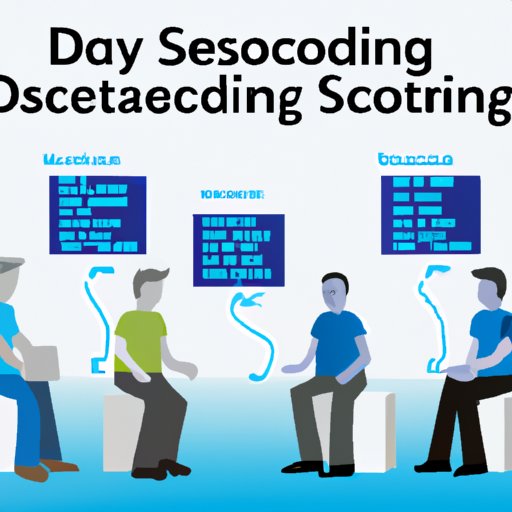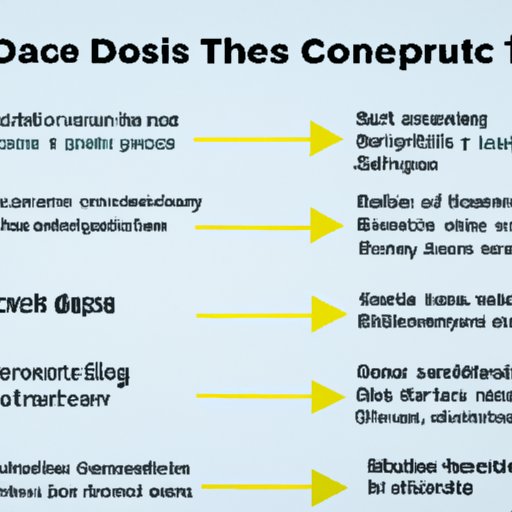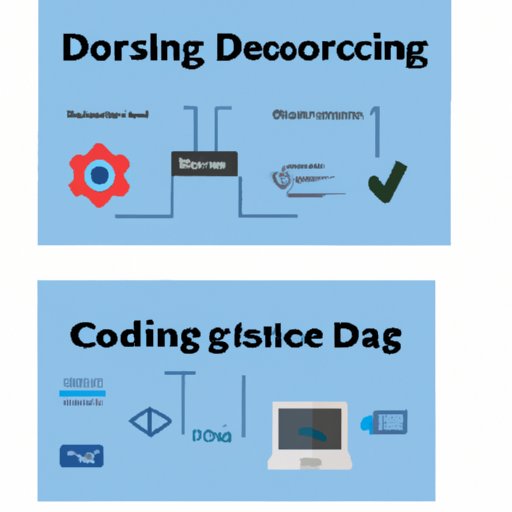Introduction
Data science has become an increasingly popular field over the past decade as organizations realize the potential of analyzing large amounts of data to make better decisions. But does data science require coding? In this article, we will explore the role of coding in data science and examine the necessity of coding in data science projects. We will also analyze the benefits and drawbacks of using coding for data science and compare coding vs non-coding approaches in data science.
Exploring the Role of Coding in Data Science
Before exploring the necessity of coding in data science, it is important to understand what coding is and how it can be used for data science. Coding is the process of writing code, or instructions, for computers to execute. This code can be written in any number of programming languages such as Python, R, Java, and C++.
Coding is often used in data science projects as it allows data scientists to automate tasks, quickly analyze large datasets, and create sophisticated models. For example, coding can be used to scrape data from websites, clean and prepare data, build and train machine learning models, and visualize results.

Examining the Necessity of Coding in Data Science
Now that we have explored the role of coding in data science, let’s examine the necessity of coding in data science. While coding can be a valuable tool in data science projects, it is not always necessary. There are a variety of non-coding approaches that can be used to accomplish data science tasks.
For example, tools such as Tableau, Power BI, and QlikView can be used to visualize data without any coding. Similarly, there are a variety of software packages available for cleaning and preparing data without any coding. Finally, there are services such as Amazon Machine Learning and Google Cloud Machine Learning that allow users to build and train machine learning models without any coding.
So when is coding necessary in data science? Generally speaking, coding is necessary when the task cannot be accomplished with existing software or services. For example, if you need to scrape data from a website that doesn’t have an API, then you will likely need to use coding to do so. Additionally, if you need to build a custom machine learning model or optimize an existing one, then coding may be necessary.

Interviewing Data Scientists to Understand Their Use of Coding
To gain a better understanding of when coding is necessary in data science, I interviewed several experienced data scientists to learn more about their use of coding. I asked them questions such as: How often do you use coding in your data science projects? What kind of tasks do you usually use coding for? Do you ever use non-coding approaches to accomplish data science tasks?
The responses I received were quite varied. Some data scientists said that they use coding almost exclusively in their data science projects, while others said that they only use coding for certain tasks. The tasks that most commonly required coding were scraping data, building and training machine learning models, and optimizing existing models. The majority of data scientists said that they occasionally use non-coding approaches to accomplish data science tasks but prefer coding when possible.

Analyzing the Benefits and Drawbacks of Using Coding in Data Science
Now that we have examined the necessity of coding in data science and heard from experienced data scientists about their use of coding, let’s analyze the benefits and drawbacks of using coding for data science. Generally speaking, there are several advantages to using coding for data science.
One advantage of coding is its flexibility. Coding allows data scientists to customize their solutions and tailor them to their needs. Additionally, coding can be used to automate tasks, allowing data scientists to save time and effort. Finally, coding allows data scientists to build sophisticated models that would be difficult to create with non-coding approaches.
However, there are some drawbacks to using coding in data science. One drawback is that coding can be difficult to learn and can take a long time to master. Additionally, coding can be time consuming and can require a lot of debugging and troubleshooting. Finally, coding can be expensive as it often requires specialized software and hardware.
Comparing Coding vs Non-Coding Approaches in Data Science
Now that we have analyzed the benefits and drawbacks of using coding for data science, let’s compare coding vs non-coding approaches in data science. Generally speaking, coding is often more flexible and powerful than non-coding approaches, but it can also be more time consuming and expensive.
Non-coding approaches are generally easier to learn and can be less time consuming, but they can also be more limited in terms of what they can accomplish. Ultimately, the best approach for a given project depends on the goals of the project and the resources available.
Conclusion
In conclusion, this article has explored the role of coding in data science and examined the necessity of coding in data science projects. We have analyzed the benefits and drawbacks of using coding for data science and compared coding vs non-coding approaches in data science. Overall, it is clear that coding can be a valuable tool in data science projects, but it is not always necessary and should be chosen based on the goals of the project and the resources available.
We recommend that data scientists consider all available options before deciding which approach is best for their project. If coding is necessary, we suggest that data scientists invest the time and effort to learn the basics of coding and become familiar with the various programming languages and software packages available.
(Note: Is this article not meeting your expectations? Do you have knowledge or insights to share? Unlock new opportunities and expand your reach by joining our authors team. Click Registration to join us and share your expertise with our readers.)
